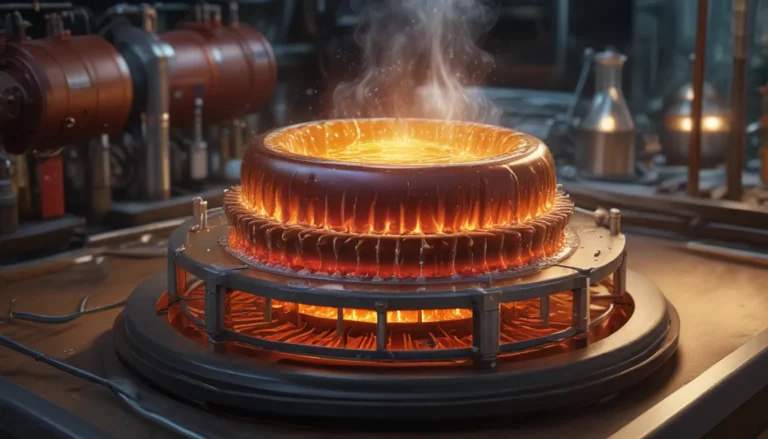A Note About Images: The images used in our articles are for illustration purposes only and may not exactly match the content. They are meant to engage readers, but the text should be relied upon for accurate information.
If you’ve ever dabbled in the realm of physics or electronics, chances are you’ve come across Kirchhoff’s Laws. These fundamental principles, developed by German physicist Gustav Kirchhoff in the mid-19th century, are the cornerstone of electrical circuit analysis. In this article, we will unravel the mysteries of Kirchhoff’s Laws and uncover some surprising facts that will deepen your understanding of how electrical circuits work.
Unveiling the Essence of Kirchhoff’s Laws
At the core of electrical circuit analysis lie Kirchhoff’s Laws, named after the brilliant physicist Gustav Kirchhoff. These laws provide a set of rules for calculating currents and voltages in electrical circuits, serving as the bedrock for understanding and solving complex electrical problems. As you journey through the world of Kirchhoff’s Laws, you’ll discover the following intriguing facts that will shed light on the elegance and complexity of electrical circuit theory.
A Closer Look at Kirchhoff’s Laws
-
The Law of Currents: Kirchhoff’s First Law, also known as the Law of Currents, dictates that the sum of currents entering a junction in a circuit is equal to the sum of currents leaving the junction. This principle, based on charge conservation, ensures a balance of current flow within a circuit.
-
The Law of Voltages: Kirchhoff’s Second Law, or the Law of Voltages, states that the sum of voltages around any closed loop in a circuit is zero. This law, rooted in energy conservation, helps determine the voltage drops and gains across various components in a circuit.
The Versatility of Kirchhoff’s Laws
- Applicability to DC and AC Circuits: Kirchhoff’s Laws are not limited to direct current (DC) circuits; they are equally applicable to alternating current (AC) circuits. Whether dealing with constant or varying currents, these laws help decipher the behavior of circuits across diverse scenarios.
The Power of Kirchhoff’s Laws in Circuit Analysis
-
Essential for Designing Electronic Devices: Kirchhoff’s Laws are indispensable for designing electronic devices, analyzing communication networks, and managing power systems. Their role in technological advancements cannot be overstated.
-
A Systematic Approach to Circuit Analysis: By following Kirchhoff’s Laws, engineers and technicians can analyze complex circuits methodically, making it easier to identify and rectify any faults or issues in the system efficiently.
The Enduring Legacy of Kirchhoff’s Laws
- Stood the Test of Time: Since their inception in the mid-19th century, Kirchhoff’s Laws have remained foundational principles in electrical circuit analysis. Their validity and applicability have been reaffirmed through scientific experiments and practical applications over the years.
Embracing the Wonders of Kirchhoff’s Laws
From their humble origins to their pivotal role in modern electronics, Kirchhoff’s Laws continue to shape the landscape of physics and engineering. Delving into the intricacies of these laws opens up a world of possibilities and fosters innovation in various industries. So, whether you’re a student, a professional, or simply curious about the mysteries of physics, exploring Kirchhoff’s Laws can elevate your understanding of electrical circuits and their applications.
FAQs About Kirchhoff’s Laws
-
What Are Kirchhoff’s Laws?
Kirchhoff’s Laws are fundamental principles used to analyze electrical circuits, encompassing the conservation of current and voltage. -
Who Discovered Kirchhoff’s Laws?
Gustav Kirchhoff, a renowned German physicist, formulated Kirchhoff’s Laws in the mid-19th century based on his extensive research on electrical circuits. -
How Do Kirchhoff’s Laws Help Solve Circuit Problems?
By applying the principles of current and voltage conservation, Kirchhoff’s Laws provide a systematic approach to analyzing and solving complex circuit problems. -
Are Kirchhoff’s Laws Applicable Only to DC Circuits?
No, Kirchhoff’s Laws are relevant to both DC and AC circuits, although calculations in AC circuits may involve additional complexities due to factors like frequency and phase. -
Can Kirchhoff’s Laws Be Used in Circuits with Non-Ideal Components?
Yes, Kirchhoff’s Laws can be applied to circuits with non-ideal components such as resistors, capacitors, and inductors, albeit with considerations for their frequency-dependent behavior in AC circuits.
Dive into the astounding world of Kirchhoff’s circuit laws and master the art of circuit analysis. Uncover the astonishing facts about diodes, explore essential components in electronic circuits that shape our modern world. Whether you’re a passionate learner or an inquisitive soul, the captivating realm of physics beckons you to embark on a journey of discovery and exploration.






